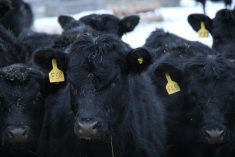Consumer Reports’ Food Safety and Sustainability Center released its Beef Report last month.
A number of questions, concerns and criticisms have been raised by the North American Meat Institute, the International Food Information Council, Business Insider, and others. Rather than answer the specific questions raised, Consumer Reports encouraged people to read the report more closely.
Unfortunately, reading the report more closely simply raises more questions about the expertise and/or integrity of Consumer Reports and its “policy and action arm,” Consumers Union.
- More on the Alberta Farmer: What Consumer Reports said about beef safety
Read Also

RDAR continues to become more relevant and useful to producers five years after its inception
RDAR has already amassed a strong resume five years after its inception.
Here’s one example: The Danger of Superbugs heads a section on Page 10 and 11 detailing the health hazards posed by Shiga toxin-producing E. coli (STEC) such as E. coli 0157. This section implies antimicrobial resistance will make STEC infections more difficult to treat. This is not true.
Antibiotics are not used to treat STEC infections in people. Instead, treatments for STEC infections focus on replacing fluids due to diarrhea. In fact, antibiotic use is strongly discouraged in both Canada and the U.S. because they could make the situation worse.
Antibiotics are not used to treat STEC infections in people, so antibiotic resistance will not make STEC infections more difficult to treat.
If antibiotics are not used to treat STEC infections in people, why is E. coli used in antimicrobial-resistance surveillance programs?
Antimicrobial-resistance surveillance programs in Canada and the U.S. use E. coli as an indicator organism for several reasons. First, E. coli is found in all warm-blooded animals and birds, and survives to some extent in the environment. Although some E. coli (like the STECs) are dangerous, the vast majority of E. coli is perfectly harmless (and some are even beneficial). Because E. coli is found almost everywhere, E. coli-based surveillance programs can always find it, and it is easy to grow and identify in the lab. Second, although antibiotics are not used to combat STEC infections in humans, E. coli is exposed to antibiotics that are used to treat other bacterial infections. This makes E. coli a valuable indicator of how antimicrobial use can affect the overall bacterial population. Third, bacteria can trade antimicrobial-resistance genes with each other, so rates of antimicrobial resistance in E. coli can indicate the degree to which antimicrobial-resistance rates may be changing in the overall bacterial population.
What are the actual rates of antimicrobial resistance in E. coli in Canadian beef? The Canadian Integrated Program for Antimicrobial Resistance Surveillance (CIPARS) has collected E. coli samples from retail beef since 2002. The 2013 CIPARS report indicates that 74 per cent of E. coli isolates from retail beef could be killed by every antimicrobial tested, while four per cent were resistant to three or more antimicrobial classes.
Canada’s beef industry remains focused on ensuring the safety of Canadian beef. Research funded through the Canadian Beef Cattle Industry Science Cluster has clearly demonstrated that large Canadian beef processors do an excellent job of producing dressed carcasses that are essentially free of microbial contamination.
As well, Canada’s beef industry has supported antimicrobial use and resistance research for nearly two decades. This research gives strong evidence that Canada’s beef producers are using antimicrobials responsibly. They have good reasons for doing so. The beef industry needs to ensure that these veterinary products remain effective to prevent or treat illness in cattle for economic and ethical reasons. Like everyone else, beef producers also need to ensure that medical antimicrobials continue to work when they or their family need to use them. We need cattle to remain healthy so that they can produce safe, high-quality beef. We also need to ensure that consumers can have confidence that they are buying safe, affordable, high-quality beef that was raised in a responsible and sustainable manner.
The numerous misleading statements in the Beef Report are no reason for consumers to lose confidence in the safety of Canadian beef, or the Canadian beef industry’s ongoing commitments to keep it safe. Provided consumers continue to cook ground beef to 71 C, science says that the beef for sale in Canadian (and American) grocers is a safe, nutritious, responsible and sustainable food choice.
The Beef Science Cluster is funded by checkoffs, Agriculture and Agri-Food Canada, industry, and other governments to advance research and technology transfer supporting the Canadian beef industry’s vision to be recognized as a preferred supplier of healthy, high-quality beef, cattle and genetics.















